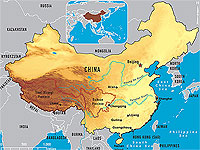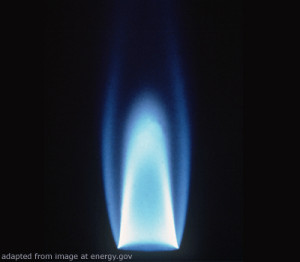Sino-Russia gas deal represents a fundamental change

(Business New Europe – bne.eu – COMMENT: Jacob Grapengiesser of East Capital – June 2, 2014) After ten years of haggling, Moscow and Beijing finally signed off on game-changing $400bn gas supply deal, under which Russia will at first supply 38bn cubic metres (cm) of gas to China over 30 years from 2018.
Moscow and Beijing are to share the $77bn cost of building the new “Power of Siberia” pipeline – Russia puts in $55bn and China $22bn – stretching from Eastern Siberia to China’s underdeveloped northern provinces. A second gas pipeline, to the Western Provinces of the People’s Republic, may also be built, expanding the annual Chinese gas purchase to 6bn cm.
 The sticking price had been the price China was willing to pay. While the final price remains a commercial secret, analyst say that the headline total suggests Beijing will pay between $350 and $380 per 1,000 c m, slightly less than the European price, but almost twice what Russia’s friends in the Commonwealth of Independent States (CIS) pay. The bottom line is the deal will make state-owned gas monopolist Gazprom a modest but healthy profit.
The sticking price had been the price China was willing to pay. While the final price remains a commercial secret, analyst say that the headline total suggests Beijing will pay between $350 and $380 per 1,000 c m, slightly less than the European price, but almost twice what Russia’s friends in the Commonwealth of Independent States (CIS) pay. The bottom line is the deal will make state-owned gas monopolist Gazprom a modest but healthy profit.
But securing energy supplies to China is not the importance of the deal. Rather it represents a fundamental change in the relationship between Russia and China and will have far-reaching consequences for both global politics and business.
Change in mentality
Russia’s trade with China has more than doubled in the last decade to $90bn this year and should reach $100bn next year, making China Russia’s biggest trade partner: Russia sells raw materials and imports mainly machines and manufactured goods from China.
However, the gas deal is a break from this mercantile relationship and a step towards a much deeper strategic partnership. The problem with building extremely expensive gas pipelines is you can’t move th em once they are done. While the Russian imports will account for less than a quarter of China’s estimated 180bn-260bn cm of demand in 2015 alone, the co-dependency that comes with the gas – China needs the energy and Russia needs the money – means that the two sides are committing themselves to civil relations for the next 30 years, the lifetime of the deal. That is no small change in mentality, as Russia and China are not natural allies and have always viewed each other, even in Communist times, with a certain level of mistrust until now.
A bargaining chip in global energy deals
The deal also hands both sides a useful bargaining chip in their deals with other partners. The EU has been unsettled by the string of so-called “gas wars” between Moscow and Kyiv that led to the spigots being turned off in 2006, 2008 and 2009, leaving the rest of Europe literally to freeze. So now it is looking for new supplies. At the same time the EU has been complaining about Gazpr om’s ‘divide and charge’ strategy of signing supply contracts on a country-by-country basis that has meant some EU members pay a lot more for their gas than others. Brussels is trying to push through an energy reform package that would allow gas to be freely traded across the entire union that would break Gazprom’s monopolistic power. Now with the option of simply routing more gas east rather than west, Gazprom goes into these negotiations with a much stronger hand than before.
Similar arguments apply to China. Imports of liquidefied natural gas (LNG) are expected to rise sharply in the future, but these have to be shipped via mega-tanker through the South China Sea that remains vulnerable to a US navy blockade, amongst other things, so a fixed-line supply of gas across its northern border gives Beijing much more strategic energy security. And like Gazprom in Europe, the alternative supply improves Beijing’s bargaining position in negotiating the prices for that LNG with s uppliers.
Welcome to the multipolar world
More generally, the new deeper alliance between Moscow and Beijing is a move towards creating a multipolar world. Russian President Vladimir Putin has complained repeatedly (and during the showdown with Washington over Ukraine’s fate, much more frequently) about the US dominance of international affairs and the unipolar model it follows. Russia has to everyone’s surprise more-or-less successfully defied Washington’s wishes in the Ukrainian imbroglio, in that Moscow has shown the US cannot effectively punish Russia with sanctions without doing real economic damage to the rest of the CIS and Europe, and any attempt to impose the so called Phase III sectorial sanctions would ultimately hurt transatlantic relations as much as they would hurt Russia as European business is increasingly dependent on the Russian market – now almost the biggest on the Continent.
Beijing has similar concerns and has long partnered with Moscow in vetoing many of the US’s more aggressive motions in the UN security council. It too would also like to see a multipolar world, largely because Beijing will clearly play an extremely important role in any multinational geopolitical set up simply due to its size.
End of dollar domination
This emerging change in the global balance of power will be manifest in many ways, but maybe the most significant will be the slow shift away from the US dollar as the default currency for international trade settlements. Part of the gas deal is China will move (slowly) towards settling its bills in rubles. This means that China will start to add rubles to its reserves and Russia will add yuan as their mutual trade grows.
It will be a glacial process, because if either country begins to sell off their dollar reserves quickly, that will have a huge impact on the value of the dollar. But ultimately it will also have a huge impact on the bond markets in both Chi na and Russia, as the central banks look for instruments into which to invest their non-dollar reserves. Politically reducing the dominance of the dollar in global trade also fits neatly with the multipolar agenda as you cant have multipolar politics with a unipolar global currency.
